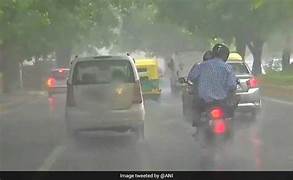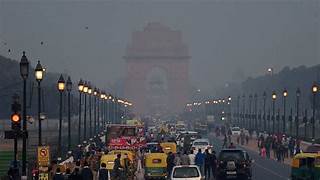Delhi ranks as the most polluted city in India.To combat rising levels of air pollution,IIT kanpur has proposed the artificial rain initiative and the government has agreed to bear the cost of this process which would cross 13 crores.Is it worth it?Let’s explore.
What is artificial rain?
Basically it’s the rain caused through artificial means. One of these methods is cloud seeding. How does it work exactly?
There are 2 main components required for cloud seeding process silver iodide and solid carbon dioxide commonly known as dry ice.
Silver iodide molecules comprise hexagonal structure which helps to avoid crystal on the molecule.
Dry ice converts the crystal into liquid state. At a temperature of -78°C, it’s absorbed into the atmosphere as a result of which the air density increases.The process of spraying these chemicals into the clouds to induce rain artificially is called cloud seeding.

Harmful effects of artificial rain:-
Seeding agents like silver iodide, dry ice or salt precipitate back to the environment with the rain.
Residual silver is highly toxic and dry ice can inturn be a source of greenhouse gas as it’s basically carbon dioxide and promote global warming.
Disadvantages of artificial rain:-
It’s not controllable and may lead to floods. Also requires crores of money for operation which makes it economically unfeasible
Latest update:-
Nov 20-21 will be cloudy as this plan is expected to be executed on those days incase approved.
This is the part of National clean air programme.
Recently,even the supreme court has been monitoring the pollution
and took certain measures to curb this such as the odd-even scheme in which on even days only those vehicles with last digit on no. plate as even will operate and on odd days vehicles with registration no. ending with odd digits will be operating.
Moreover, the public was being encouraged a lot to commute via public modes of transport such as the bus or train.
Why this plan was proposed?
The quality of air is worsening day by day.Now from the upper end of “very poor” category on Tuesday,it changed to “severe”
category on Wednesday.
AQI (Air quality index)of Delhi was 426 at 4 pm Wednesday within 24 hours on average increasing from 395 on Tuesday as per the daily official bulletin.
A higher AQI value signifies greater levels of air pollution.
On Friday morning it was as high as 407.Air quality is always better in the morning.
The process of inducing artificial rain is called pluviculture.Cloud seeding is putting chemicals into the clouds to make it heavy.This causes rain.Although it might mess with the nature,it has got some potential benefits.
If the first plan is successful,they will further expand the scale upto an area of 1000 km square in the second experiment.The cost per km square is around 1 lakh.It amounts to 3 crores for the first phase and 10 crores for the second.Delhi has a total area of 1483 km square.
Artificial rain was successfully carried out in countries like US,UAE,Thailand,China,Australia,Iran,Saudi Arabia, Russia,South Africa,Oman,Indonesia,Malaysia,
Mexico and Singapore.
Changing the weather patterns can cause serious long-term impacts on the environment.
But it can supply water to arid regions where water is scarce and the area prone to droughts.
It can boost agricultural harvest and promote economic growth of the country.Cloud condensation can be prevented by this method thus avoiding much loss of life and property.The deserts can become green & habitable.So,the people can settle in these areas.
3 methods of cloud seeding:-
Static Cloud seeding
Involves use of AgI and dry ice into cold clouds containing water droplets having extremely low temperature.These particles trigger the formation of snow flakes or crystals which grows in size & fall as rain.
Dynamic Cloud seeding
More complicated than static Cloud seeding as it relies on a precise sequence of events to be effective.Vertical air currents are enhanced.
Hygroscopic cloud seeding
Fine hygroscopic particles such as salt are dispersed into the base of warm clouds using flares or explosives.These particles act as cloud condensation nuclei thus augmenting the no. and size of the water droplets.It makes the cloud more stable and reflective.
Artificial rain benefits
Producing water through cloud seeding costed 18 Paisa per litre as per research.This cost could be cut down to more than half if we use our own seeding aircraft.
Although seeding can’t completely solve droughts,it can increase rainfall about 18%.So, this cloud seeding can be beneficial to manage droughts.
In rainfall deprived areas,this method can help to solve the problem of water shortage.
However the effectiveness of this method depends on various factors like local weather,type of pollutants and the specific goals of the operation.



